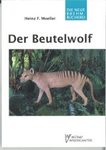![Die Blattflöhe [The Psyllids] Die Blattflöhe [The Psyllids]]()
Click to have a closer look
About this book
Related titles
About this book
Language: German
Psyllids are sap-sucking lice whose greatest biodiversity is in the tropics. Most of the 4000 described species are very host specific. Related psylla species often develop on related plant taxa and are usually affected by specific parasitoids. Psyllids also have endosymbionts and their similar relationships suggest cospeciation between these groups. Therefore psyllids are a fascinating group for evolutionary and biogeographical questions.
As with other sap suckers, there are also agricultural and forestry pests among the psyllids. In addition to direct damage, as in the eucalyptus psyllids, the transmission of plant pathogens is of considerable economic importance. For example Diaphorina citri, the vector of citrus greening disease (HLB) triggering pathogens, is the most important pest in citrus cultivation in North and South America. Other important vectors are the apple and pear sucker and Bactericera cockerelli on potatoes and tomatoes. Some beneficial psyllids have been successfully used to control invasive plants on the other hand.
Despite scientific interest and economic importance, knowledge of psyllids in general is lacking. This volume provides an overview of these fascinating insects. A summary of knowledge also highlights existing gaps.
Summary in German:
Blattflöhe sind Pflanzensaft saugende Insekten, deren größte Artenvielfalt in den Tropen liegt. Die meisten der etwa 4000 beschriebenen Arten sind sehr wirtsspezifisch. Verwandte Blattfloharten entwickeln sich oft auf verwandten Pflanzentaxa und werden in der Regel von spezifischen Parasitoiden befallen. Auch besitzen Blattflöhe Endosymbionten und deren ähnliche Verwandtschaftsverhältnisse, was auf Kospeziation zwischen diesen Gruppen hindeutet. Blattflöhe bilden deshalb eine faszinierende Gruppe für evolutionsbiologische und biogeografische Fragestellungen.
Wie bei anderen Pflanzensaftsaugern gibt es auch unter den Blattflöhen land- und forstwirtschaftliche Schädlinge. Neben direkten Schäden wie bei den Eukalyptus-Blattflöhen ist die Übertragung von Pflanzenpathogenen von grosser wirtschaftlicher Bedeutung. So ist Diaphorina citri, Vektor des die Zitrus-Vergütung (HLB) auslösenden Patogens, der wichtigste Schädling im Zitrusanbau in Nord- und Südamerika. Weitere wichtige Vektoren sind die Apfel- und Birnblattsauger sowie Bactericera cockerelli auf Kartoffeln und Tomaten. Als Nützlinge werden einige Blattflöhe erfolgreich zur Bekämpfung invasiver Pflanzen eingesetzt.
Trotz wissenschaftlichem Interesse und wirtschaftlicher Bedeutung sind die Kenntnisse über Blattflöhe im Allgemeinen schlecht. Der vorliegende Band gibt eine Übersicht über diese faszinierenden Insekten. Neben einer Zusammenfassung von Bekanntem wird auch auf bestehende Wissenslücken hingewiesen.
Customer Reviews





![Die Blattflöhe [The Psyllids] Die Blattflöhe [The Psyllids]](http://mediacdn.nhbs.com/jackets/jackets_resizer_xlarge/21/214104.jpg?height=620)
![Die Blattflöhe [The Psyllids]](http://mediacdn.nhbs.com/jackets/jackets_resizer/21/214104.jpg)




![Die Gottesanbeterin (Mantis religiosa) [The European Mantis]](http://mediacdn.nhbs.com/jackets/jackets_resizer_medium/17/178329.jpg?height=150&width=105)
![Die Seescheiden von Helgoland: Biologie und Bestimmung der Ascidien [ The Sea Squirts of Helgoland: Biology and Determination of Ascidians]](http://mediacdn.nhbs.com/jackets/jackets_resizer_medium/20/203911.jpg?height=150&width=108)
![Marienkäfer [Ladybirds]](http://mediacdn.nhbs.com/jackets/jackets_resizer_medium/59/59352.jpg?height=150&width=105)
![Unsere Zuckmücken [Our Mosquitoes]](http://mediacdn.nhbs.com/jackets/jackets_resizer_medium/23/237825.jpg?height=150&width=107)





![Les Poux (Insecta, Anoplura) de la Région Afrotropicale [Lice of the Afrotropical Region]](http://mediacdn.nhbs.com/jackets/jackets_resizer_medium/12/123824.jpg?height=150&width=99)






![Verhalten der Gazellen [Behaviour of Gazelles]](http://mediacdn.nhbs.com/jackets/jackets_resizer_medium/20/203915.jpg?height=150&width=106)
![Das Okapi [The Okapi]](http://mediacdn.nhbs.com/jackets/jackets_resizer_medium/16/164634.jpg?height=150&width=107)








